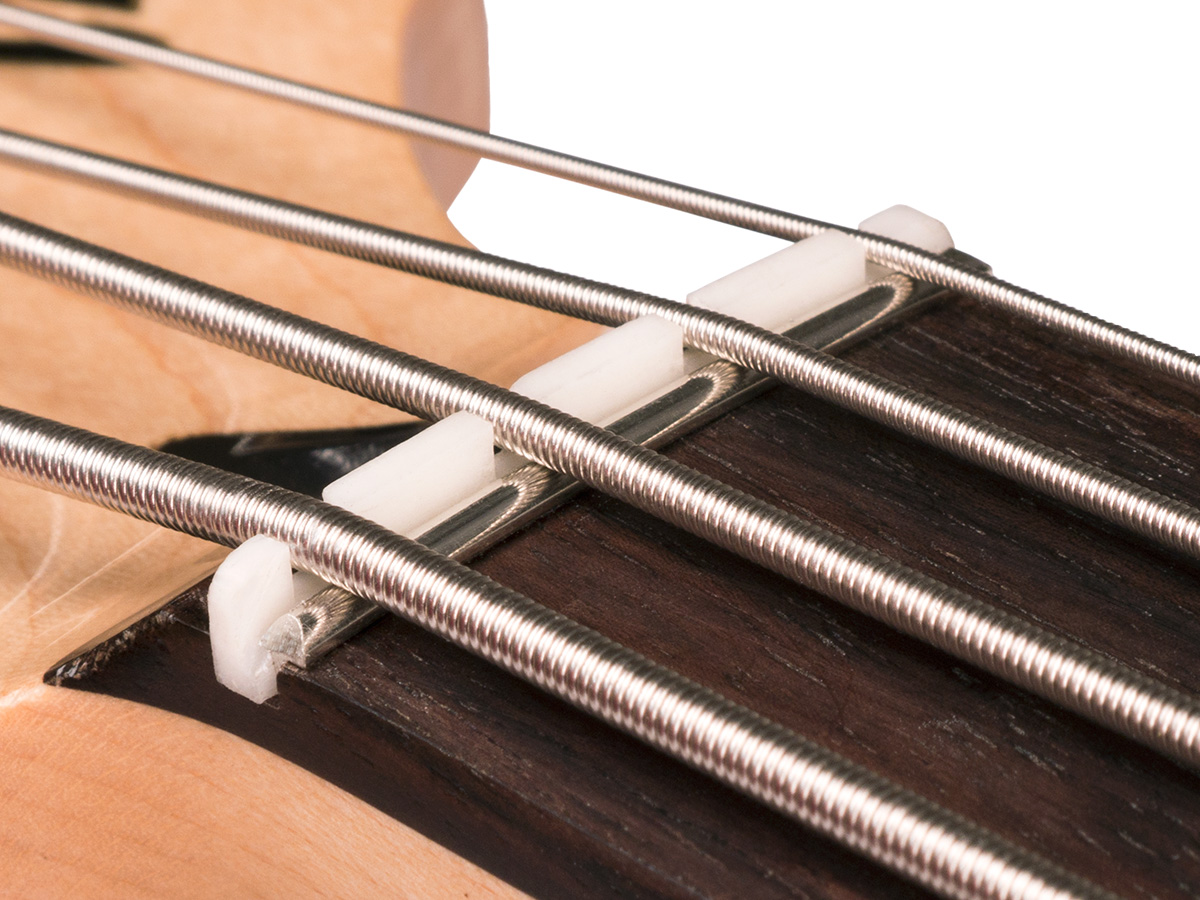
The Zero Glide Replacement Nut System borrows the "zero fret" concept to reduce string contact in the nut by up to 93%, increasing tuning stability, playability, and open string tone. It only takes a few minutes to install with absolutely no permanent alteration to your instrument. For Fender Style "Jazz Bass".
Also available in Black Delrin.
Note: May not fit specific models. Check the sizing guide to be sure.





The bone nut was easy to install. I sanded the length and depth with a table sander. The instructions are complete and easy to follow. Four zero frets of different sizes are included in the banjo kit--you try the smallest and work your way up until you have no open string buzz. Use medium viscosity cyanoacrylate (available from Stewmac) so you have time to set the nut and fret properly. I'm pleased with the results, improved tone, and hammer-ons and pull-offs are more defined.





This was my first attempt at installing a zero glide. It only took me about an hour to complete the install and I am very pleased with the tone of my open back banjo with the new zero glide nut!





I wrote another review about Zero Glide and my Gold Tone OB 150 banjo. As many already know the Zero Glide Nut is standard equipment on the OB 150 banjo. Gold Tone has this nut on other instruments too. I like this nut system for a lot of reasons. I installed a Zero Glide nut on my Martin D custom and I even installed a Zero Glide on my Washburn M3SWK F body mandolin. Those stock plastic nuts on many of the entry level pro instruments just does not cut it. You are cheating yourself and your audience out of a lot of tone and sweetness that ears should be hearing. The Zero Glide nut does a world of wonders for my instruments. Do yourself a favor and get one on your axe. You may love it. I know I do. I am addicted to Zero Glide.





I just installed a Zero Glide Nut on my '14 Les Paul Studio. I was having trouble with the traditional *tink* and tuning issues often associated with Gibsons. Initially, I was going to try the new titanium nut made by Gibson but was told that it would not fit my '14 Les Paul. Keep in mind, I have never installed a nut before on a guitar where I needed to remove the old one. I had only fixed broken nuts in the past. I say this because I had a little anxiety when I decided to install the nut myself. The first thing I noticed was how much extra material must be sanded to get a perfect fit. For my application, I had to sand the bottom of the nut as well to get the fret to seat properly against the fret board. This may sound bad, but it is a good thing! It means that the folks at Stew-Mac realize (as I hope you do) that although these are precision instruments, there are many parts that are finished out by hand. The extra material allows for those minor variations and with a little work,





An inexperienced guitar tech worked on the nut of my Guild M75 Aristocrat electric and I ended up with a "sitar" sound on my high E string and a dead G string and bad intonation. A friend recommended Zero Glide and that company recommended this particular nut.
Installation was not particularly difficult for a handy guy, but took two hours and involved sanding nearly 1/8 inch off the bottom of the new nut and 1/16th plus off each side while being careful to keep it even. The video on the company website helps. Once fitted correctly you decide how big of a 'zero fret' you want. There are four of different sizes in the package. I tried them all and found that the smaller ones provide very low action at the nut (which is nice), but require a higher action up the neck to clear the first fret where the strings can rattle. I ended up using the largest fret provided as it allowed me low action where I need it. Once you have it figured out you trim the zero fret to length and glue it

$39.99